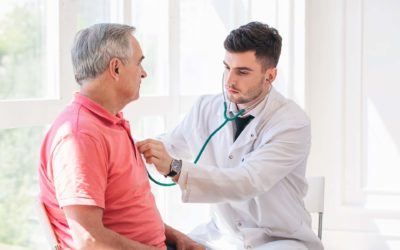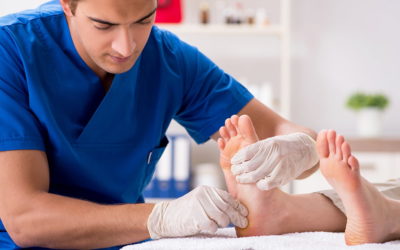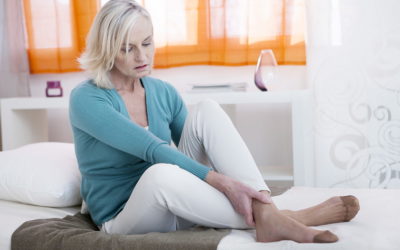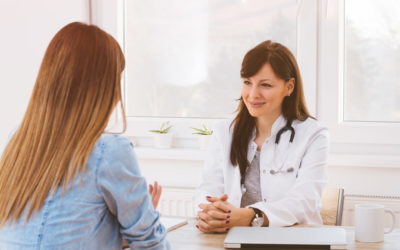The world has become a very different place amid the COVID-19 pandemic. It’s only natural to experience different and possibly heightened emotions. According to the Centers for Disease Control (CDC), 40 percent of U.S. adults reported struggling with anxiety, mental...
Expert Health Tips
Take advantage of their expertise in areas that interest you with our blogs, podcasts and health emails. And if you need a doctor, we can help with that too!
Recent Posts From Our Health Experts
Atrial Fibrillation (AFib): A Common, Treatable Heart Condition
If you have atrial fibrillation—also called AFib—you’re not alone. AFib is a common heart rhythm disorder. In the United States, more than 5 million people have atrial fibrillation. As a cardiologist who specializes in heart rhythm disorders, I am seeing younger,...
Diabetic Foot Wounds: Myths, Care and Healing
In my podiatry practice, it goes without saying, I see a lot of foot issues. But for people with diabetes, foot problems and wounds take on a whole different meaning. Usually they are chronic conditions. The way you care for your feet can have a big impact on your...
5 Ways to Keep Cool & Safe When Exercising Outside
It’s hot out there, but summer weather shouldn’t stop you from exercising, gardening or enjoying other activities outside – in fact, getting out in nature helps with stress levels! But it’s important to be prepared and proactive to avoid heat-related problems. The...
ATVs – Before You Ride, Make Sure You Have Safety on Your Side
Summer and the sun is finally here. Many are taking this opportunity to get outside and enjoy outdoor activities. One activity that is growing in popularity is the use of All-Terrain Vehicles (ATVs). It has become very popular with agriculture, farming and...
Your Ankle Pain: Could It Be Arthritis?
Ankle injuries are pretty common. It’s easy to make a misstep and give yourself a strain or sprain. But as an ankle surgeon, many of my patients are surprised when they learn that arthritis can also be the source of their ankle pain.
Understanding Kidney Stones: What Are They & How Do They Form?
If you’ve ever suffered from kidney stones, you don’t need to be told how painful they are. They’re also very common, as more than half a million people visit emergency rooms each year for kidney stones. As a nephrologist, I see a lot of kidney stone cases. They are...
The ‘Pet Effect’ and Its Impact on Your Mental Health
If you’re on the fence about adding a pet to your family, here is something in the ‘plus’ category: Pets can be very good for your mental health and well-being. As a mental health professional for more than 27 years, I’ve seen in my practice as well as my own life,...
Is Weight Loss Surgery Right for You?
My passion for weight loss management started when I worked in a family practice doctor’s office. There was a definite correlation with obesity and an increase in chronic diseases and decrease in quality of life. Now that my main focus is helping patients reach their...
‘You Have Cancer’: What To Do When You Hear These Words, for Yourself or a Loved One
By Joanna Morgan MSN, RN, OCN & Joselyn Hayes BSW, CSW For over 35 years, we’ve been helping people and their families through the many emotions and challenges that change their lives after hearing these three words. I’m Joanna Morgan, an oncology nurse navigator...
On the Road to a Healthy Heart: Dr. Keith Miller Takes His Own Advice
I started thinking a lot about my heart health because, at 52 years old (holy crap!), I have come to terms with the reality that I am not immune to the disease that I attempt to PREVENT and TREAT every day as a cardiologist. In short, I have been confronted with my...
The Surprising Risk of Sepsis for Pregnant Women, New Moms & Newborns – What You Need to Know
As an infectious disease pharmacist and member of Bryan’s Sepsis Committee, I have seen many cases of infections and sepsis in many different patients. I specialize in getting the right antibiotics to patients with severe infections like sepsis, and work mostly with...
Tune in to…Bryan Health Radio
Want to know more about a health topic, or tips to stay well? Our 10-minute podcasts provide practical, useful advice for a lifetime of good health. And, they’re easy to listen to while you’re on the go, at work or at home. Get valuable health information from doctors and health experts. Listen to or download a free podcast today!
Stay Informed For Your Health
You and your family are unique. At Bryan Health, we have a variety of classes, events, podcasts and more for all stages of life.
To stay in the know, subscribe to our monthly For Your Health email!
Concerned About Health Symptoms, and Unsure What to Do? Use our Symptom Checker and find out.
Whether it’s a rash, your child’s ear pain or your aching back, our symptom checker can help determine what to do. Just answer a few questions about your symptoms and receive recommendations for care.
Care When You Need It
Getting sick or hurt is never convenient. From minor illnesses and injuries to serious health conditions, turn to Bryan. We provide the expertise and care you need. Choose from our online Bryan Health ezVisit to Bryan Urgent Care walk-in clinic to three emergency rooms ready to help you.













